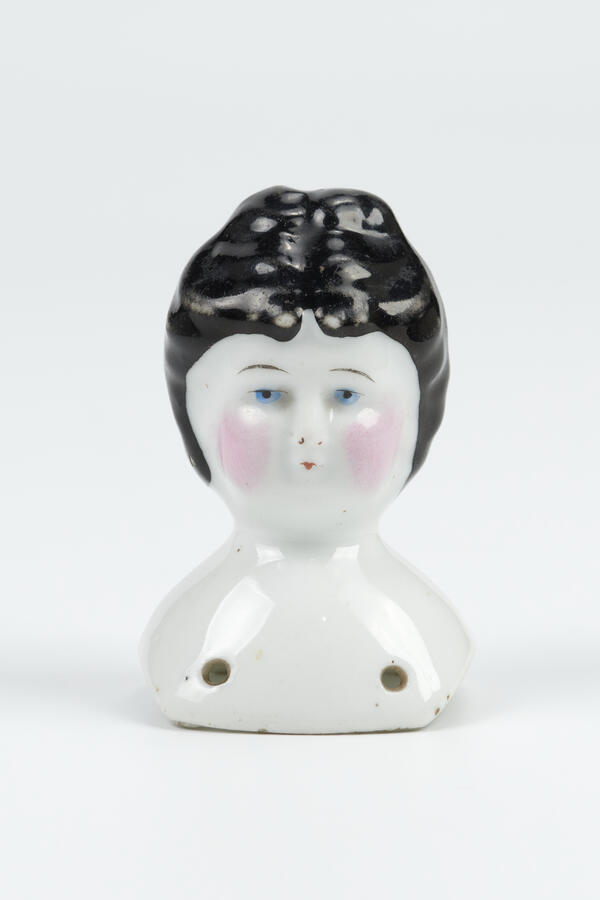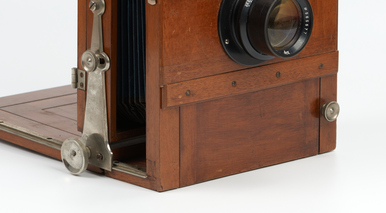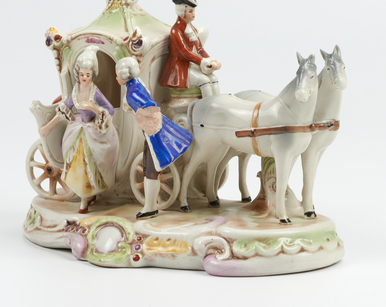The first porcelain products were first made in China. The porcelain ware began to be produced in Europe when the European manufacturers learned about the manufacturing method. Porcelain dolls appeared in the 1750s in France, Germany, and Italy. These products reached their peak in the 19th century. Many aristocrats bought dolls for their children to develop the right taste. Dresses for toys were sewn according to the latest fashion, and large ateliers used dolls for advertising their clothing items.
The toy production changed over time: first, the figures were cast in special forms entirely, then the body was cast separately from the head. The faces were painted manually. The quality of used materials was different: the porcelain with a rough surface, called ‘stone bisque’ (‘unpainted bisque’), was used for the cheaper models.
Porcelain for doll heads began to be tinted in body color to get more resemblance to the skin since the beginning of 1870. Doll bodies were made of printed leather, wood, fabric, composite, and papier-mache. Arms and legs for dolls were made of the same materials. These dolls’ sizes ranged from 6 to 80 centimeters.
The expensive doll models had miniature wigs that were made of mohair and human hair. Semi-manufactured products of cheaper quality were doll heads; the buyer could independently make a body and sew the necessary clothes. In this case, the faces were made in the simplest ways: the eyes were most typically drawn, and the mouth was molded closed, unlike the more expensive “smiling” models. There were two versions of hairstyles — modeled from porcelain or drawn.
The first “Nanjing” dolls — analog of Chinese dolls — appeared in the 1830s. Glazed porcelain was used for manufacturing; usually, it was not tinted and shone after the firing. Such dolls were produced at the Royal Manufactory in Meissen and Berlin, at the Royal Copenhagen Manufactory in Denmark, at the Rörstrand factory in Sweden. Dolls were also made at Russian factories — they were not inferior to their European versions, but they were very expensive because of the limited number of dolls produced.
This exhibit was kept in possession of the Tropin family as a relic. Antonina Tropina, a family representative, donated it to the museum in 2011.
The toy production changed over time: first, the figures were cast in special forms entirely, then the body was cast separately from the head. The faces were painted manually. The quality of used materials was different: the porcelain with a rough surface, called ‘stone bisque’ (‘unpainted bisque’), was used for the cheaper models.
Porcelain for doll heads began to be tinted in body color to get more resemblance to the skin since the beginning of 1870. Doll bodies were made of printed leather, wood, fabric, composite, and papier-mache. Arms and legs for dolls were made of the same materials. These dolls’ sizes ranged from 6 to 80 centimeters.
The expensive doll models had miniature wigs that were made of mohair and human hair. Semi-manufactured products of cheaper quality were doll heads; the buyer could independently make a body and sew the necessary clothes. In this case, the faces were made in the simplest ways: the eyes were most typically drawn, and the mouth was molded closed, unlike the more expensive “smiling” models. There were two versions of hairstyles — modeled from porcelain or drawn.
The first “Nanjing” dolls — analog of Chinese dolls — appeared in the 1830s. Glazed porcelain was used for manufacturing; usually, it was not tinted and shone after the firing. Such dolls were produced at the Royal Manufactory in Meissen and Berlin, at the Royal Copenhagen Manufactory in Denmark, at the Rörstrand factory in Sweden. Dolls were also made at Russian factories — they were not inferior to their European versions, but they were very expensive because of the limited number of dolls produced.
This exhibit was kept in possession of the Tropin family as a relic. Antonina Tropina, a family representative, donated it to the museum in 2011.



